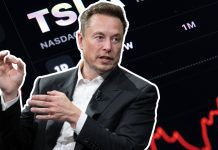Cars.com research suggests that 32% of car shoppers are now looking to get into EVs. For these car shoppers, there will be over 100 new EV models entering the market over the next four years. However, federal funding and infrastructure for these electric vehicles are being debated right now. What do the numbers mean and what needs to happen moving forward?
According to the Research
Cars.com claims that the platform doesn’t even get 5% of the total searches on EVs. However, the searches have risen in certain areas, such as Denver, Sacramento, Seattle, Los Angeles, and San Francisco.
To meet this increased demand, dealerships need to get prepared. On Cars.com alone, there are 41% of new car dealerships currently offering new electric vehicles. Sadly, there are only 37% of dealerships in the country offering EVs in their inventory. However, 63% of dealerships are planning new infrastructure and business models to offer EV sales, training, and service.
Even though the searches for electric vehicles have doubled over the past year on Cars.com, the platform estimates that the sales themselves are not growing as quickly. This shows a deep interest in EVs but some reluctance to move forward. So, what can be done to help these consumers that are uncertain?
| Related: Ford commits $11.4 billion for shift to electric vehicles |
Next Steps to Take
An existing EV owner already understands the benefits of driving emission-free. Between the reduced fuel expense, the lessened environmental impact, and the reduced maintenance costs, these drivers already know what to expect.
With that said, EV shoppers that haven’t made the leap have more hesitancy. New shoppers are concerned with the lack of charging stations, limited driving range, long charging times, and battery lifespan, all for a good reason. Overall, these consumers simply haven’t been educated enough about the benefits of transitioning to EVs.
The key starts with education. Initially, dealers need to gain the tools and information needed to help consumers. NADA recently announced that it would work with Chargeway to train dealerships on how to talk with EV shoppers. Trained dealerships will know how to discuss the range, charging needs, and other aspects of being an electric vehicle driver.
Additionally, without more EV infrastructure, it will continue to be difficult for dealerships to sell electric vehicles. However, as the nation progresses, dealerships can prepare for the sales that are to come. It’s important to have plenty of informational material available for your customers and to start making preparations to list EVs if you are not already doing so.
EV Sales Forecast
According to EVADOPTION, new electric vehicle sales in the United States are expected to reach nearly 30% of the total sales in 2030. California alone will likely have a 57% BEV share of new vehicle sales by this time. At this point, the ratio of EV sales versus the total number of vehicles is only at about 3.4%, so this report illustrates a huge jump in buyers coming soon.
Basically, the forecast shows that by 2030, there will be 4.7 million sales versus 500,000 in 2021. If dealerships aren’t cultivating these relationships now, it’s possible the customers will turn elsewhere.
Did you enjoy this article from Brian Jones? Read other articles on CBT News here. Please share your thoughts, comments, or questions regarding this topic by submitting a letter to the editor here, or connect with us at newsroom@cbtnews.com.
Be sure to follow us on Facebook and Twitter to stay up to date or catch-up on all of our podcasts on demand.
While you’re here, don’t forget to subscribe to our email newsletter for all the latest auto industry news from CBT News.










